Marc08EX
New member
Review: McKee`s 37 Road Kill Bug Remover
McKee`s 37 Road Kill Bug Remover
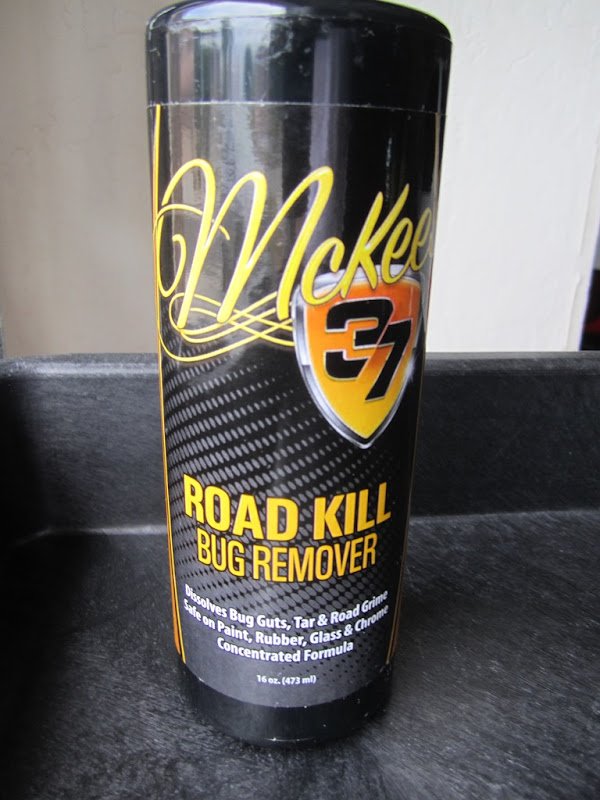
Description: (Taken from Autopia`s website)
Is the front of your vehicle covered in bug remains? Are your rocker panels littered with tar build up that won`t budge? McKee`s 37 Road Kill Bug Remover is the easy-to-use solution for difficult-to-remove deposits. McKee`s 37 Road Kill Bug Remover offers immense cleaning power without the use of harsh acids or caustic alkalines. McKee`s 37 Road Kill Bug Remover is safe for use on all exterior automotive surfaces including paint, plastic, rubber, and glass!
McKee`s 37 Road Kill Bug Remover is formulated with clear-coat safe surfactants that penetrate and break down sticky road deposits so they can be removed with little effort. Insect remains, which can damage delicate clear-coat paint finishes, will wipe away with ease. Detailer`s Road Kill Bug Remover, unlike some powerful bug removers, does not require rinsing and will not damage finishes if left to dwell too long.
Bug splatter is harmful to your paint! As insect remains break down they release powerful, acid-like enzymes that will etch into the paint and cause permanent damage. Additionally, they harden like concrete and become almost impossible to remove with normal washing methods. Read bug remains their last rights with McKee`s 37 Road Kill Bug Remover.
To use McKee`s 37 Road Kill Bug Remover for bug removal, spray directly onto the surface and allow it to dwell for 30 seconds. Wipe away bug remains with a clean microfiber to remove. To remove tar deposits, dampen a microfiber towel with water. Spray Road Kill onto both the damp down and surface. Hold the towel over the surface for 1 minute to loosen the tar, then wipe clean.
McKee`s 37 Road Kill Bug Remover is an extremely effective wash additive to help clean heavily soiled vehicles. Add 3-to-4 ounce of Road Kill into your normal wash bucket. Any wash solution supercharged with Road Kill will quickly cut through grease and heavy grime and rinse away easily off the surface.
Price:
$12.99 for 16oz
$36.99 for 128oz
Introduction:
We all do road trips occasionally - whether it be a vacation with your family or just to drive. After driving countless miles and now you`re back home, you are more likely to see some dead bugs splattered all over your front end. Don`t you just hate it when that happens? The longer you leave it on your paint, the harder it is to clean them off. In addition, these acidic bug guts could eat up and etch your paint if not cleaned off at a timely fashion.
I was never a believer of bug cleaners. I thought they were just a gimmick... UNTIL NOW! I mean I can clean the bug guts off with my wash mitt and they usually come off...
Review:
This car has done a few road trips and has accumulated lots of dead bug guts in its front end. It hasn`t been washed and had them left in there baking in the HOT AZ sun for about 2 months.
Here are some pictures of the initial condition of the front end:

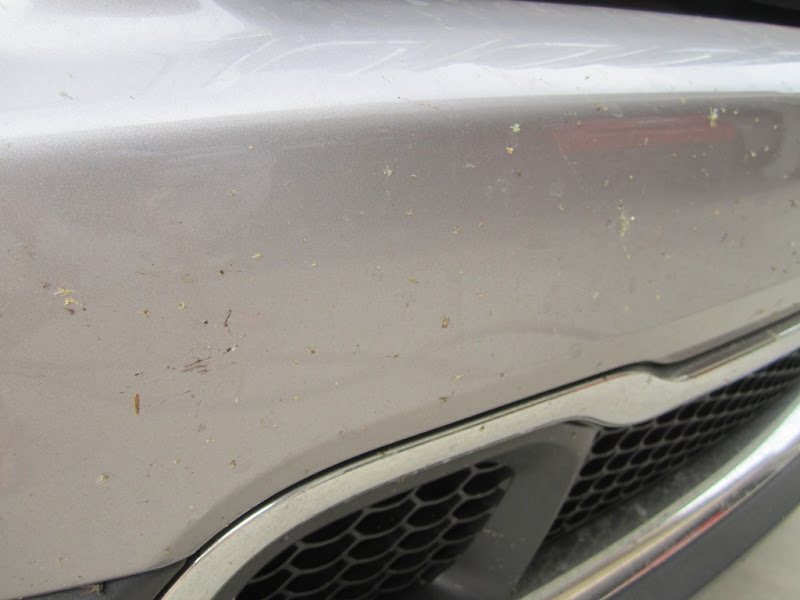


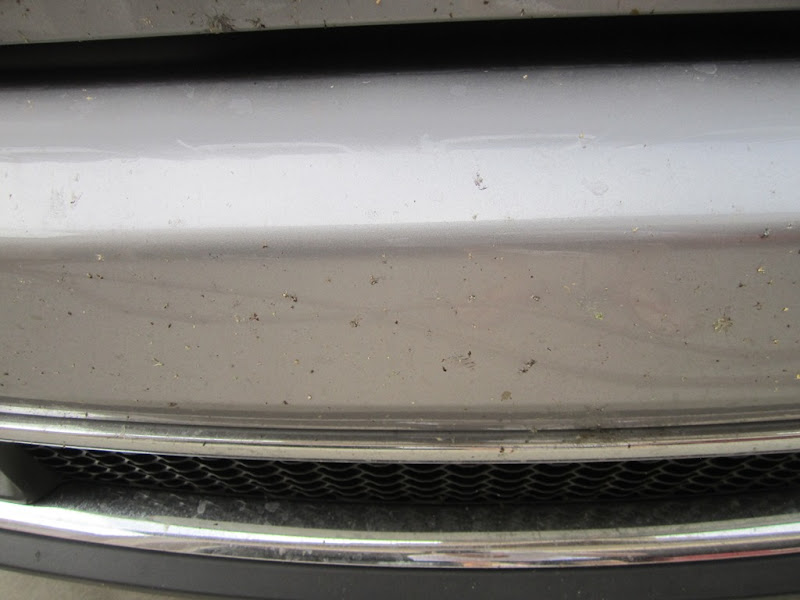
For a case this bad, I would normally bust out my bug sponge to make cleaning a little bit easier. However, I wanted to test out the cleaning ability of this road kill bug remover and see how effective it is in breaking down the bug guts baked into the paint.
So what I did was use Road Kill on half of the car`s front end (passenger side) and left the other half (driver`s side) untreated. Here`s a picture of the product being sprayed on the passenger side front bumper:

Letting the product dwell:
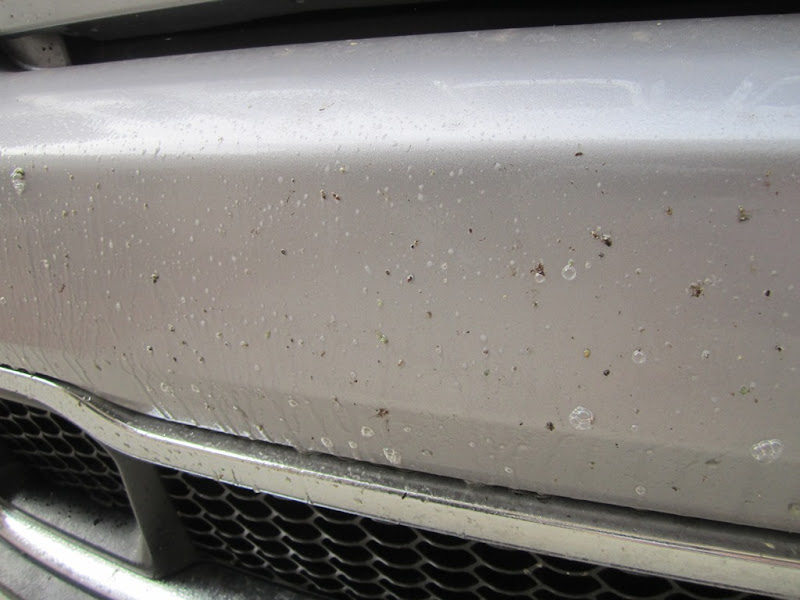
I then used my car wash sponge and washed the entire front end with equal amounts of pressure and agitation.
Passenger side (with Road Kill) being washed. As you can see, most of the bug guts were removed with ease!!
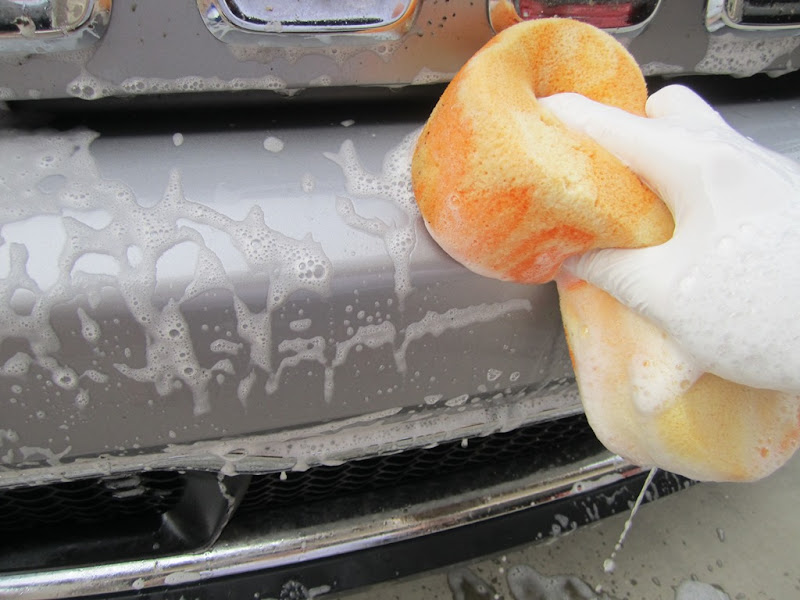
Here`s the driver side being washed. As you can see, there were a lot of bug guts left. I`m sure if I scrubbed it real hard, more would come off. But I wanted to keep the pressure and agitation variable constant between the two sides.

After washing both sides, I then rinse off the soap and I`m left with this.
50/50:


Passenger side completely clean and free of bug guts!


Driver side left with some bug guts.


So I applied the Road Kill on the untreated driver side and let the product dwell:

Here are the results!!! A clean, shiny and bug free front end.




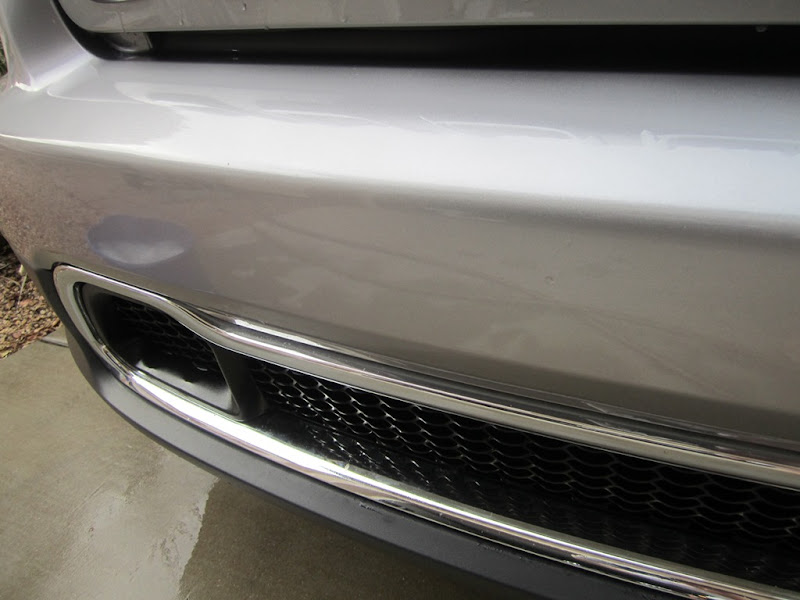
Opinions and Observations:
As you can see from my 50/50 test, this bug remover definitely helped remove the bug guts a lot easier. It was effective in breaking down the bug guts and it only takes very little effort to wipe them off. The smell has some sort of citrus smell to it. I couldn`t really pinpoint the exact smell. It`s not overpowering by any means. The product is clear and sprayed on very easily.
Conclusion:
I never believed in bug remover products but now, I`M A BELIEVER!!! Whenever I get bugs on the front end of my car, I know what product I will reach for to make the removal a whole lot easier. If you want to make removal of bug guts an easier process (especially for you FL folks with love bugs), pick up some McKee`s Road Kill. You won`t regret it.
McKee`s 37 Road Kill Bug Remover
Description: (Taken from Autopia`s website)
Is the front of your vehicle covered in bug remains? Are your rocker panels littered with tar build up that won`t budge? McKee`s 37 Road Kill Bug Remover is the easy-to-use solution for difficult-to-remove deposits. McKee`s 37 Road Kill Bug Remover offers immense cleaning power without the use of harsh acids or caustic alkalines. McKee`s 37 Road Kill Bug Remover is safe for use on all exterior automotive surfaces including paint, plastic, rubber, and glass!
McKee`s 37 Road Kill Bug Remover is formulated with clear-coat safe surfactants that penetrate and break down sticky road deposits so they can be removed with little effort. Insect remains, which can damage delicate clear-coat paint finishes, will wipe away with ease. Detailer`s Road Kill Bug Remover, unlike some powerful bug removers, does not require rinsing and will not damage finishes if left to dwell too long.
Bug splatter is harmful to your paint! As insect remains break down they release powerful, acid-like enzymes that will etch into the paint and cause permanent damage. Additionally, they harden like concrete and become almost impossible to remove with normal washing methods. Read bug remains their last rights with McKee`s 37 Road Kill Bug Remover.
To use McKee`s 37 Road Kill Bug Remover for bug removal, spray directly onto the surface and allow it to dwell for 30 seconds. Wipe away bug remains with a clean microfiber to remove. To remove tar deposits, dampen a microfiber towel with water. Spray Road Kill onto both the damp down and surface. Hold the towel over the surface for 1 minute to loosen the tar, then wipe clean.
McKee`s 37 Road Kill Bug Remover is an extremely effective wash additive to help clean heavily soiled vehicles. Add 3-to-4 ounce of Road Kill into your normal wash bucket. Any wash solution supercharged with Road Kill will quickly cut through grease and heavy grime and rinse away easily off the surface.
Price:
$12.99 for 16oz
$36.99 for 128oz
Introduction:
We all do road trips occasionally - whether it be a vacation with your family or just to drive. After driving countless miles and now you`re back home, you are more likely to see some dead bugs splattered all over your front end. Don`t you just hate it when that happens? The longer you leave it on your paint, the harder it is to clean them off. In addition, these acidic bug guts could eat up and etch your paint if not cleaned off at a timely fashion.
I was never a believer of bug cleaners. I thought they were just a gimmick... UNTIL NOW! I mean I can clean the bug guts off with my wash mitt and they usually come off...
Review:
This car has done a few road trips and has accumulated lots of dead bug guts in its front end. It hasn`t been washed and had them left in there baking in the HOT AZ sun for about 2 months.
Here are some pictures of the initial condition of the front end:
For a case this bad, I would normally bust out my bug sponge to make cleaning a little bit easier. However, I wanted to test out the cleaning ability of this road kill bug remover and see how effective it is in breaking down the bug guts baked into the paint.
So what I did was use Road Kill on half of the car`s front end (passenger side) and left the other half (driver`s side) untreated. Here`s a picture of the product being sprayed on the passenger side front bumper:
Letting the product dwell:
I then used my car wash sponge and washed the entire front end with equal amounts of pressure and agitation.
Passenger side (with Road Kill) being washed. As you can see, most of the bug guts were removed with ease!!
Here`s the driver side being washed. As you can see, there were a lot of bug guts left. I`m sure if I scrubbed it real hard, more would come off. But I wanted to keep the pressure and agitation variable constant between the two sides.
After washing both sides, I then rinse off the soap and I`m left with this.
50/50:
Passenger side completely clean and free of bug guts!
Driver side left with some bug guts.
So I applied the Road Kill on the untreated driver side and let the product dwell:
Here are the results!!! A clean, shiny and bug free front end.
Opinions and Observations:
As you can see from my 50/50 test, this bug remover definitely helped remove the bug guts a lot easier. It was effective in breaking down the bug guts and it only takes very little effort to wipe them off. The smell has some sort of citrus smell to it. I couldn`t really pinpoint the exact smell. It`s not overpowering by any means. The product is clear and sprayed on very easily.
Conclusion:
I never believed in bug remover products but now, I`M A BELIEVER!!! Whenever I get bugs on the front end of my car, I know what product I will reach for to make the removal a whole lot easier. If you want to make removal of bug guts an easier process (especially for you FL folks with love bugs), pick up some McKee`s Road Kill. You won`t regret it.
